Nokia N86 8MP preview: First look
First look
This article is outdated. We have already published a full review.
Focusing on the 8MP wide-angle camera
The key selling point of the Nokia N86 8MP, as painfully evident by its name, is its 8 megapixel camera. Sporting 28mm (in 35mm terms) wide-angle lens, autofocus and dual-LED flash it is pretty well equipped as far as hardware is concerned. A xenon flash would have left very little more to be demanded but we guess Nokia doesn't favor those anymore.
However being the first handset to feature 28mm lens, the Nokia N86 8MP is still guaranteed to excite every proper geek out there. For those of you unfamiliar with the material we will explain that the 28mm lens gives you roughly 20 percent larger angle of view when looking through the viewfinder.
To make this advantage even more obvious, here's a collage illustrating the framing difference between a regular cameraphone and the wide-angle Nokia N86 8MP.

28mm vs 35mm lens angle of view
The wide-angle lens is especially useful when taking landscape and architecture photos as you don't need to go as far back to fit the whole subject in the frame.
On the negative side wide-angle lens aren't as suitable for photographing portraits from close range as people's faces turn out unnaturally distorted. It's not that 35mm is that great for making portraits either but 28mm is even worse.
Another disadvantage of the 28mm lens is that fitting more stuff in the same frame means that the things in it are actually smaller (described by fewer pixels, if you wish) and if you don't need the extra angle of view you are just wasting resolution.
Mind you, granted all other things are equal, we would take a 28mm wide angle cameraphone any day - it's just seems more suited for all-purpose walk-around uses.
Another cameraphone innovation found on the Nokia N86 8MP is its variable aperture. It's not technically a first since the Motorola Motozine ZN5 was the pioneer here but it's still rare enough.
In layman's terms, theory says the variable aperture allows the camera to choose either the benefit of better-than-standard light sensitivity or better-than-standard sharpness throughout the whole depth of the photo.
And to use the proper terminology, Nokia N86 8MP shoots at F/2.4 to let more light in low-light conditions and to F/3.2 or F/4.8 when light conditions allow it. Technically the photos at smaller apertures (indicated by a larger F-stop value) should be sharper and with larger depth of field than photos shot by any other 8 megapixel cameraphone on the market.
Unfortunately Nokia didn't give the users any kind of manual control over the aperture value and it is all automatic. We are not saying that such an option will be used too much but why not give the occasional enthusiastic user the choice.
The camera UI of Nokia N86 8MP is the same as the one back in N85. It offers extensive settings - starting from manual white balance and ISO sensitivity (up to ISO800) and including exposure compensation, sharpness and contrast settings. Various effects are also at hand, labeled color tones. You can also customize the toolbar by deciding which options to appear and in what order.
Another nice camera feature is geotagging, which by the way, works with videos, too. GPS locks are comparatively fast but you still might want to wait about a minute before your first shot.
An area where the Nokia N86 8MP disappoints compared to its rivals is camera features. We aren't talking about settings here but rather about those nice little perks that almost all midrange point-and-shoot cameras sport for quite a while now.
In other words, there is no face recognition, blink detection or smile recognition. Not to mention the 120fps and time-lapse video recording modes found on the competing handsets. This is not an issue big enough to ruin the whole deal but it is nice to have them onboard a camera flagship.
At least the panorama mode is present and it works pretty good. It automatically detects the direction in which you are rotating the camera and takes the shots at the required interval. The size of each individual shot is 1280 x 860 pixels but some of it gets wasted due to the vertical movement of the camera. Still we managed to make a 3-shots panorama with a height of almost 800 pixels which is pretty impressive stuff. And with the 28mm lens 3 shots are probably the most that potential users are ever going to need.
The Nokia N86 8MP also offers a nicely customizable time-laps stills shooting mode that lets you leave the phone on a nice vantage point and have it shoot at custom intervals for as long as you want. The resulting photos can be compiled into some really nice looking videos if you have the little technical knowledge needed to process them on a computer later on.
Since this is only a preview we are doing here today, we aren't going to get too technical on the Nokia N86 8MP image quality. We are only going to mention that we did notice some strange artifacts as a result of processing algorithm imperfections here and there. The fine detail also doesn't seem well resolved but the rest of the components are about right. We will be able to tell you more when the full review is completed next week.
So here go the photos that we managed to do for the short time given, for you to enjoy. We will start with a few side-by-side comparisons between the Nokia N86 8MP and the Samsung i8510 INNOV8, which is certainly one of the best cameraphones available on the market. Just have in mind that angle of view thingy before you rush to any conclusion.
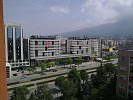
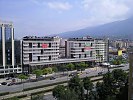
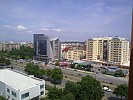
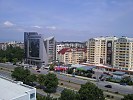
Nokia N86 8MP • Samsung i8510 INNOV8 • Nokia N86 8MP • Samsung i8510 INNOV8
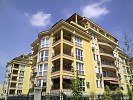
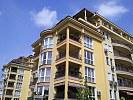
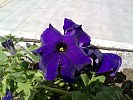
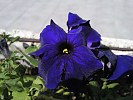
Nokia N86 8MP • Samsung i8510 INNOV8 • Nokia N86 8MP • Samsung i8510 INNOV8
And here go some more Nokia N86 8MP samples for you to enjoy.
We also snapped our resolution chart with the Nokia N86 8MP. The results are much better than the ones we got from the Nokia N97 - you can really tell the advantage of the 8 megapixel camera over the 5 megapixel one.
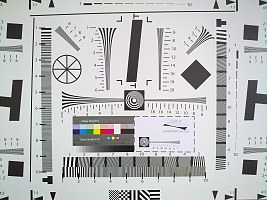

Nokia N86 8MP resolution chart photo • 100% crops

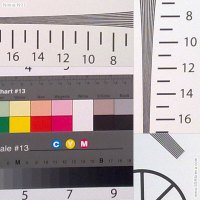
Nokia N97 resolution chart photo • 100% crops
28mm add fun to video recording
As for video recording, the N86 8MP camera shoots in the now-midrange VGA resolution at the sweet 30fps. Videos are captured in MPEG-4 format and can have automatic or manual white balance. The other available settings are night mode, exposure and color effects. You can also choose whether the dual-led flash should be turned on to act as a video light.
Leaving the fact that VGA is no longer top-of-the-ladder achievement aside, the quality of the videos is pretty good. There is plenty of resolution and the details are nicely sharpened. The colors are also well reproduced and the 28mm lens adds a really nice touch to the videos. The perspective changes more than one might expect to produce some pretty interesting videos.
Nokia N86 8MP camera sample video
First impressions
The Nokia N86 certainly is an interesting device. We did enjoy the short time we spent with it and most of our first impressions are quite in its favor. We may have a grudge or two with ergonomics, as well as screen size and resolution, but that's about all one can have against it.
The first 28mm cameraphone most certainly won't be able to stay out of the spotlight even if it wanted to. An interesting device it certainly is, but if it deserves the GSMArena thumbs-up remains to be seen.
Our upcoming review proper will hopefully clear up any remaining doubts about the N86 8MP full potential.
Reader comments
- satyajet
- 22 Nov 2014
- t1$
oviupdate
- Benja
- 30 Apr 2012
- P@T
Where This phone is made ? Made in China ? Or Made in Finland
- nokiafan
- 03 Mar 2010
- Mf5
which cell is not made in china? even iphone. silly.












